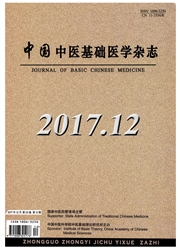

 中文摘要:
中文摘要:
慢性疼痛是临床治疗的难题之一,长期以来人们对慢性痛的调控研究一直集中在神经元方面。近年来的研究表明,疼痛的发生尤其是慢性疼痛不仅与神经元有关,与胶质细胞也关系密切。脊髓胶质细胞在痛觉的初级传入和整合以及痛觉调制尤其是慢性痛中枢敏化过程中具有重要作用。针刺是一种有效而副作用极少的治疗慢性痛的手段,可以通过抑制脊髓背角小胶质细胞及星形胶质细胞的活性,抑制或调节胶质细胞膜受体、细胞因子、神经营养因子、细胞内信号通路的活动,抑制神经元-胶质细胞的对话产生镇痛效应。故对脊髓胶质细胞在痛觉调制中的作用和针刺治疗慢性痛中作用机制研究进展进行了综述。
 英文摘要:
英文摘要:
This paper explores the effects of glial cells in pain mechanisms and acupuncture in the treatment of chronic pain. Chronic pain is one of the intractable diseases in clinical practice. In the past, in revealing the underlying mechanisms of chronic pain, neurons in the peripheral and central nervous system have been focused on all along. In recent years, it has been found that the glial cells are also closely associated with the development of pain. In the present paper, the authors introduce the roles of microgliacytes and astrocytes of the spinal dorsal horns (DH) in the development of chronic inflammatory pain and neuropathie pain and their involvement in acupuncture analgesia. Experimental results indicated that when inducing pain relief, acupuncture can inhibit activation of both microglia and astrocytes in the spinal DH, and suppress neuron-microglia-astrocyte cross-talk by down-regulating pro-inflammatory cytokine levels, receptor protein expression, intracellular ERK/MAPK signaling pathway. However, the more detailed mechanisms underlying acupuncture therapy for relieving chronic pain needs being researched further.
 同期刊论文项目
同期刊论文项目
 同项目期刊论文
同项目期刊论文
 期刊信息
期刊信息
